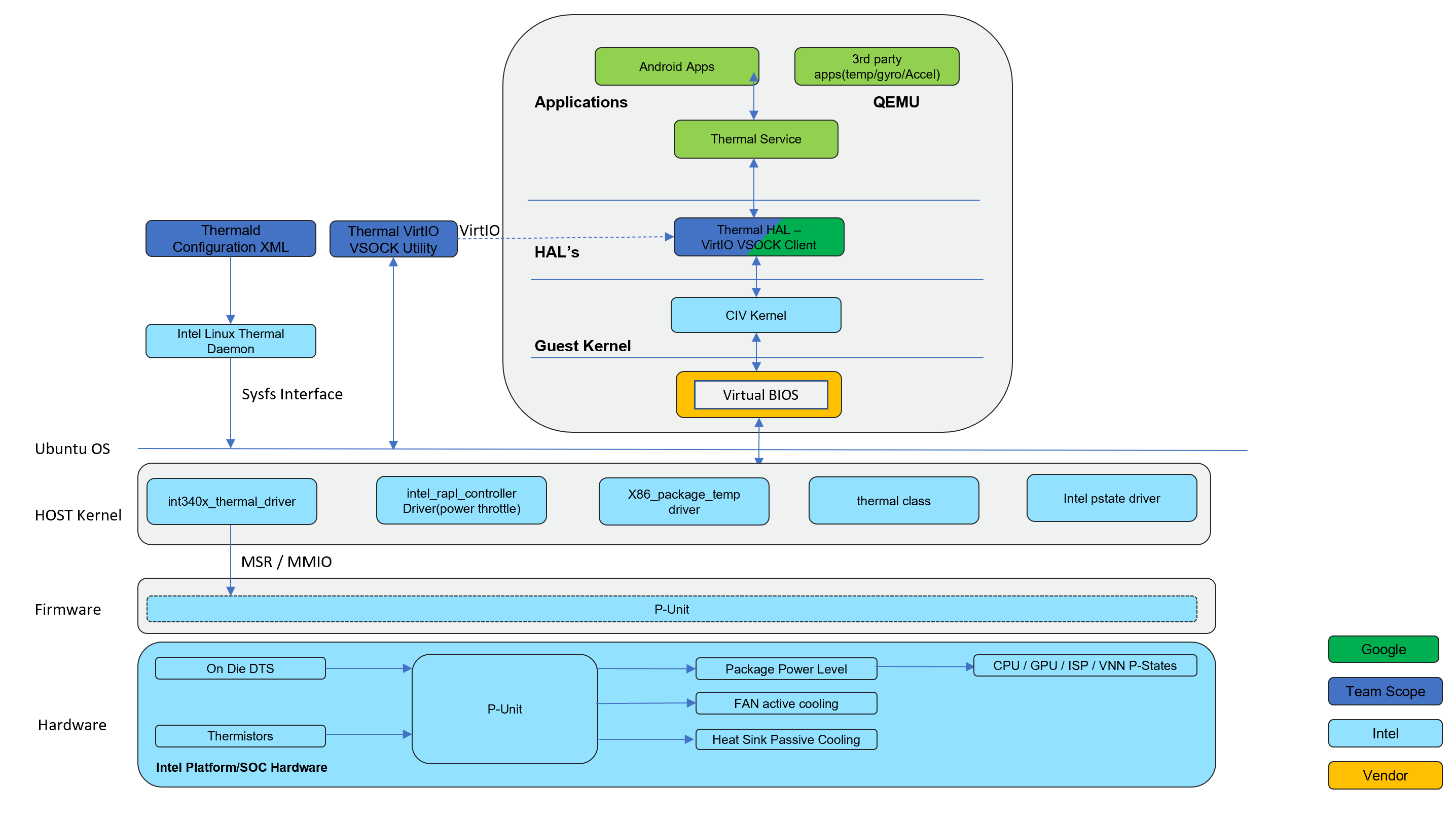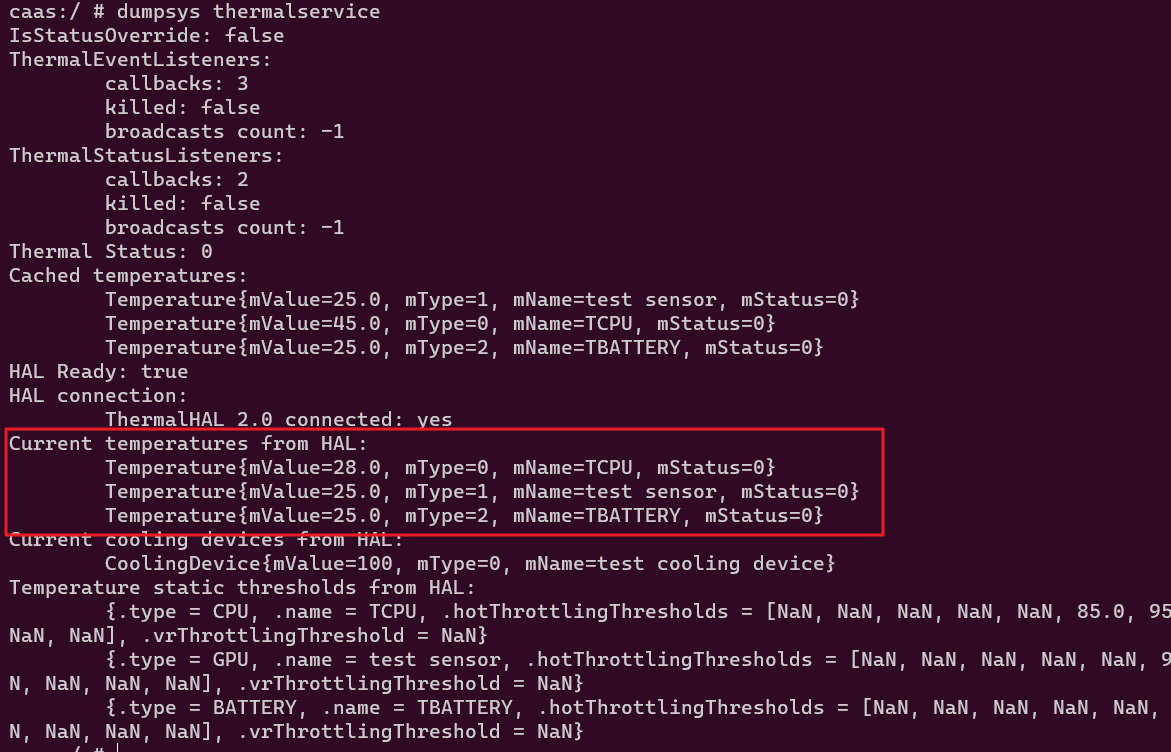Thermal Mediation in Celadon
What is a thermal daemon?
A thermal daemon is used to prevent platforms from overheating. Thermal daemons monitor the CPU temperature and corrects conditions using available cooling methods. By default, the thermal daemon monitors the CPU temperature using available CPU digital temperature sensors and maintains the CPU temperature, before hardware takes aggressive correction action.
The thermal daemon looks for thermal sensors and thermal cooling drivers in the Linux thermal sysfs (/sys/class/thermal) and builds a list of sensors and cooling drivers. Each of the thermal sensors can optionally be bound to a cooling driver by the in-kernel drivers. In this case, the Linux kernel thermal core can directly take actions based on the temperature trip points for each sensor and associated cooling device. For example, trip temperature X in a sensor can be associated with cooling driver Y. When the sensor temperature equals X, the cooling driver Y is activated.
Why is the thermal mediation solution required?
In a virtual environment, guests do not have direct access to read temperature values from the host machine. To address this issue, the thermal mediation solution was developed.
The architectural diagram of thermal mediation is shown in Figure 1:

Figure 1: Thermal Mediation Architecture
thermal HAL-VirtIO VSOCK client. The thermal HAL-VirtIO VSOCK client is a customized version of the thermal HAL. It helps connect, read, and transfer thermal values to the Android framework from the thermal VirtIO VSOCK utility running on the host.
thermal VirtIO VSOCK utility. The thermal VirtIO VSOCK utility helps read values from the thermal zone and transfer to the thermal HAL-VirtIO VSOCK client.
thermald configuration XML. The thermal daemon allows you to change this relationship or add a new one via a thermal configuration file (
thermal-conf.xml)Note
For more details on thermal configuration XML, refer to thermal-conf.xml
How to enable thermal mediation for an Android guest?
To use thermal mediation, configure the .ini file of the guest.
Path.
<home path>/.intel/.civ/<guest ini file>Configuration.
[mediation] thermal_med =<path of thermsys> ex: thermal_med=/home/intel/civ/scripts/thermsys
Validating thermal values in CIV
To validate the thermal values in CIV, use this command:
adb shell dumpsys thermalservice

Thermal Support in Platform BIOS
In PC-like platforms, the HW is booted initially with BIOS FW. BIOS FW boots and loads the OS for user operations. The BIOS in modern PCs is implemented using UEFI (unified extensible firmware interface) and supports ACPI (advanced configuration and power interface). ACPI passes all the system information to the OS by means of ACPI tables. The ACPI specification are at https://uefi.org/htmlspecs/ACPI_Spec_6_4_html/index.html
ACPI defines interfaces that allow OSPM to be proactive in its system cooling policies. With operating system power management (OSPM) in control of the operating environment, cooling decisions can be made based on the system’s application load, the user’s preference towards performance or energy conservation, and thermal heuristics. Graceful shutdown of devices or the entire system at critical heat levels also becomes possible.
It supports thermal zones, cooling policies, fan devices, and thermal objects for managing the system. Please ensure that the platform UEFI/BIOS supports the following thermal objects and interfaces:
Fan Devices: https://uefi.org/htmlspecs/ACPI_Spec_6_4_html/11_Thermal_Management/fan-device.html
Thermal Objects: https://uefi.org/htmlspecs/ACPI_Spec_6_4_html/11_Thermal_Management/thermal-objects.html
Detailed examples of implementation is provided here: https://uefi.org/htmlspecs/ACPI_Spec_6_4_html/11_Thermal_Management/thermal-zone-examples.html